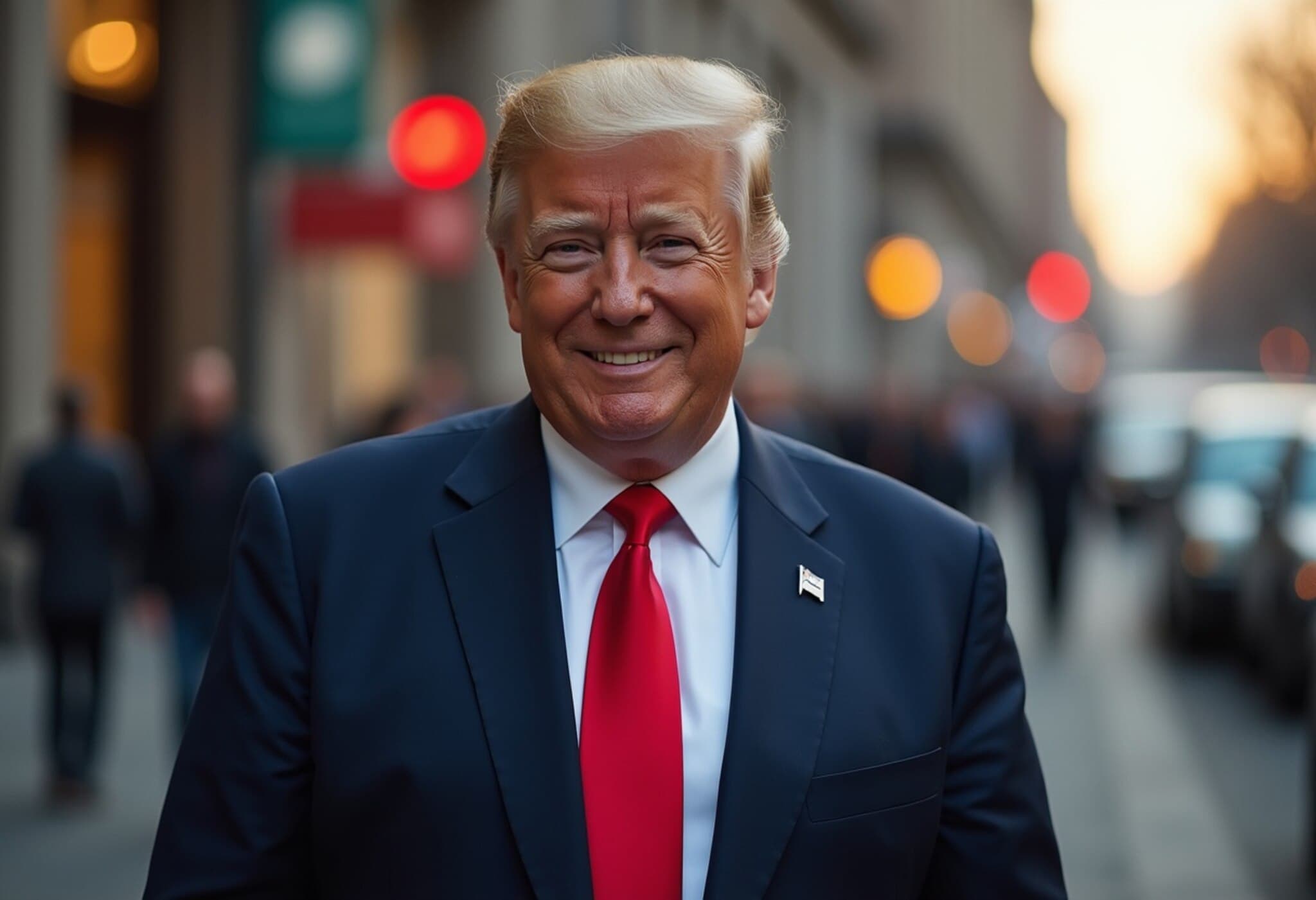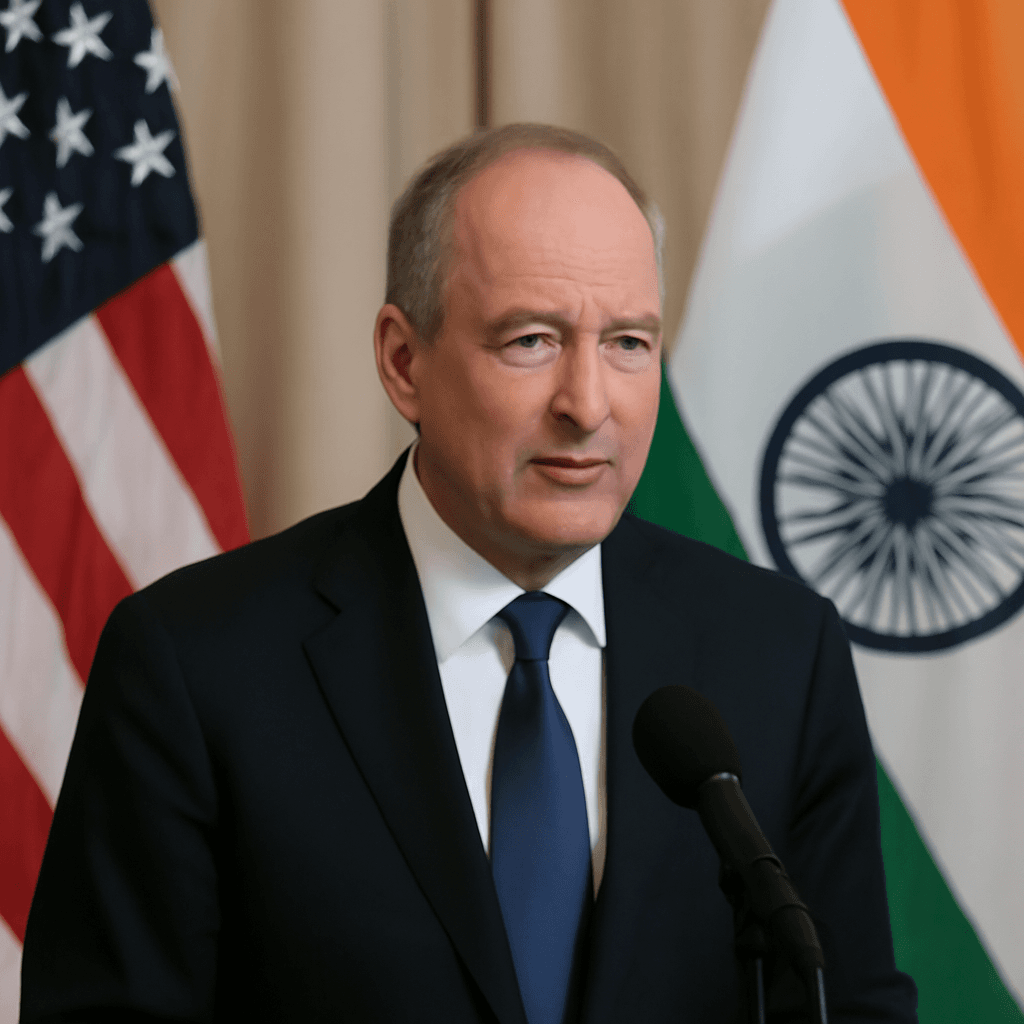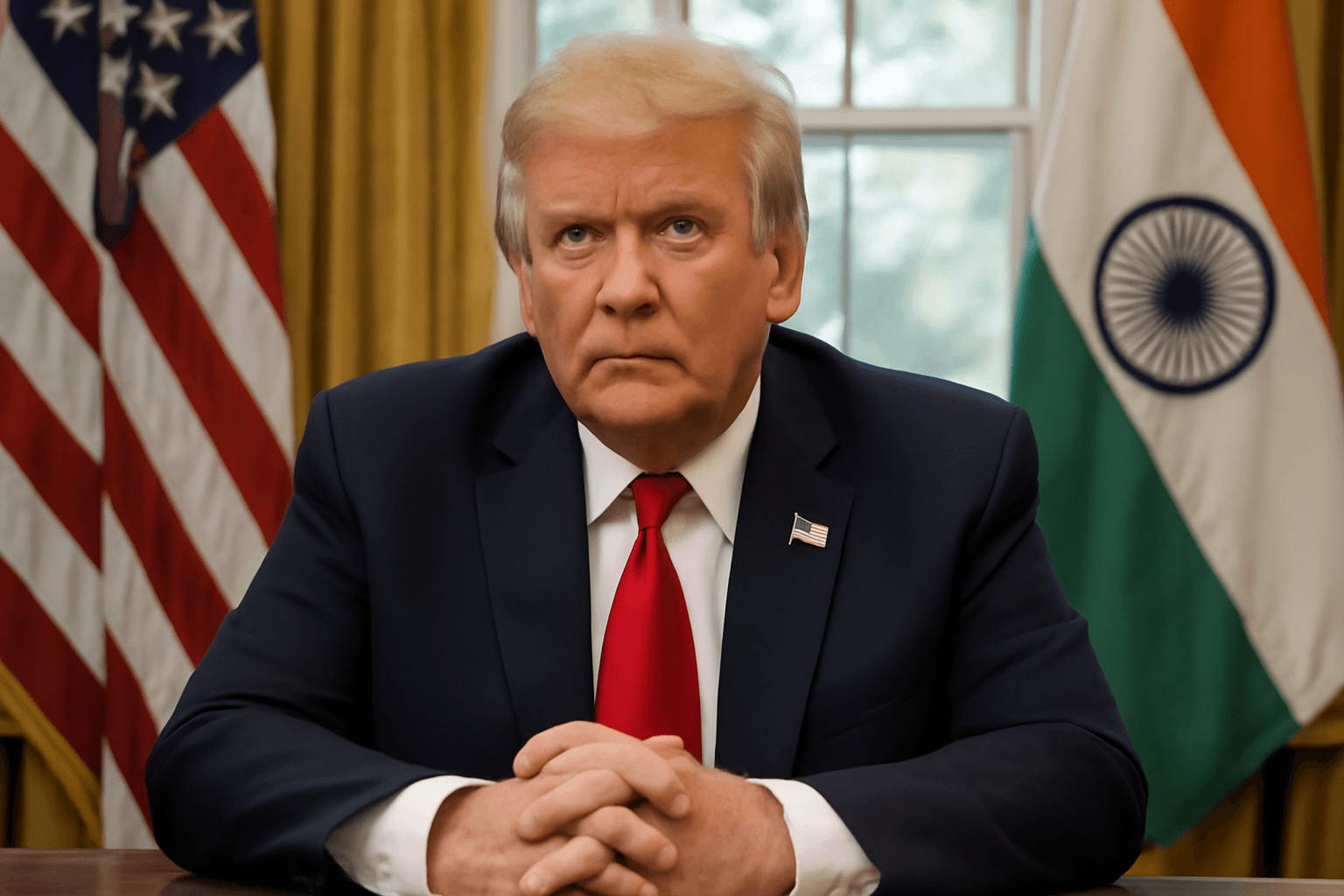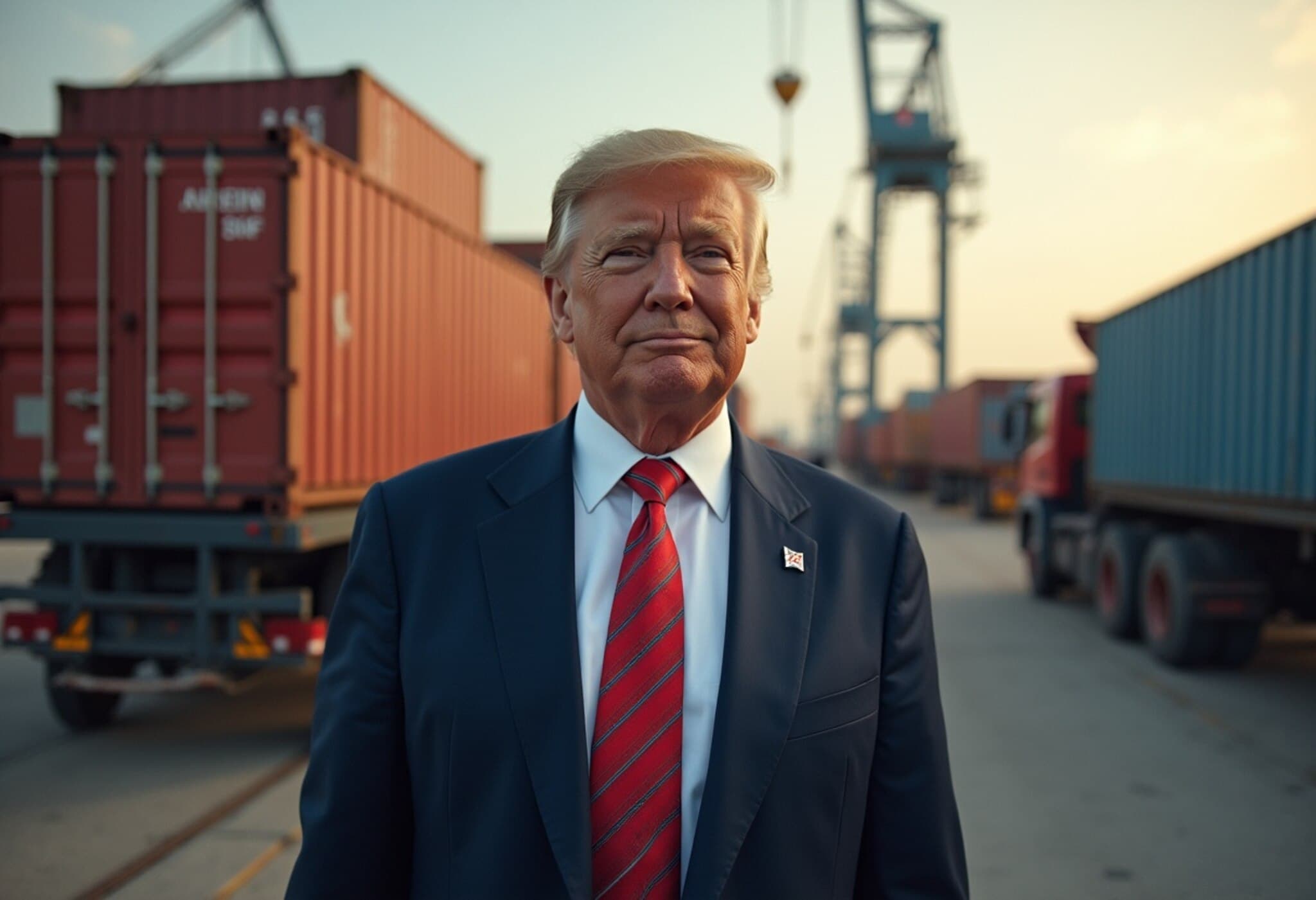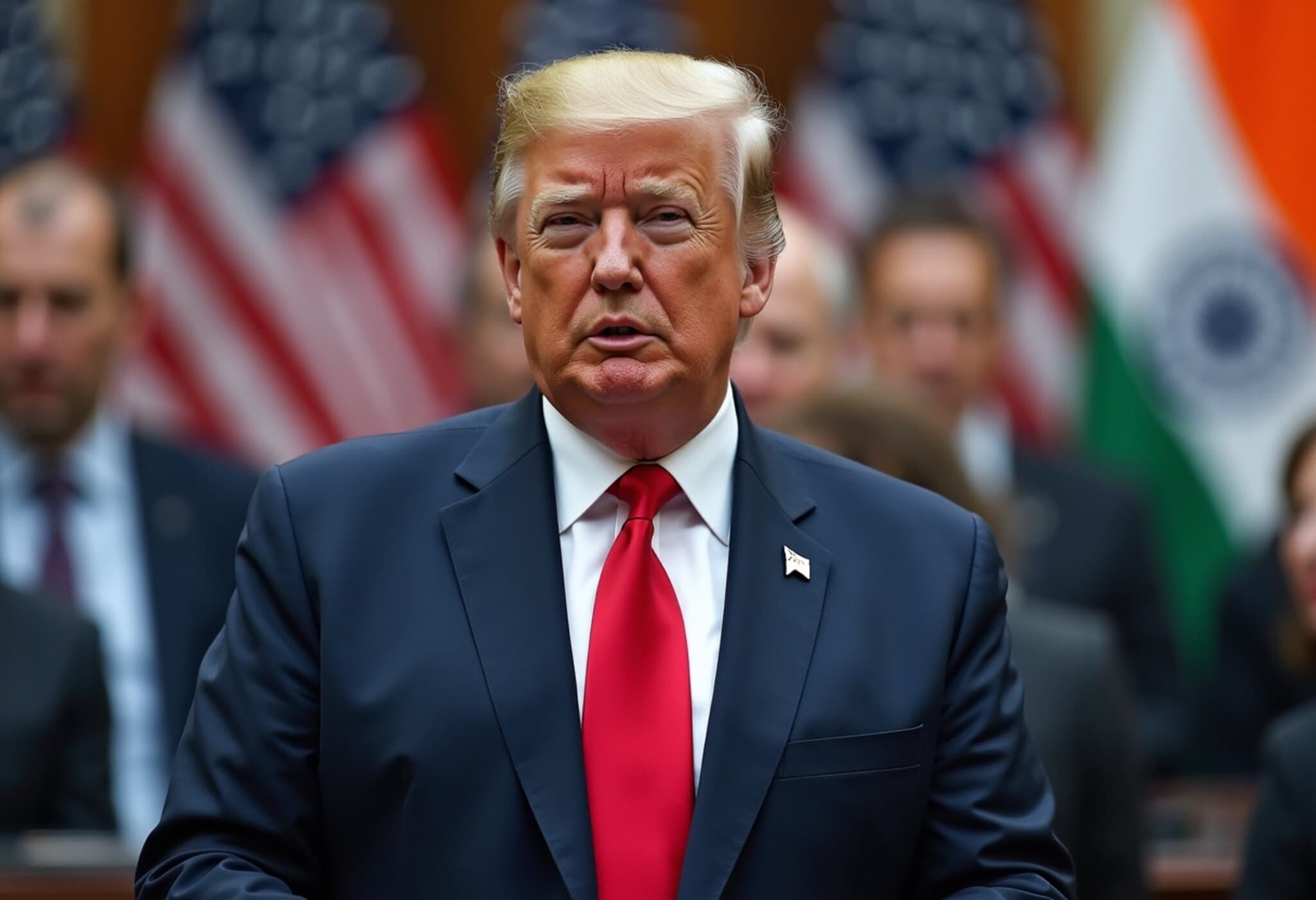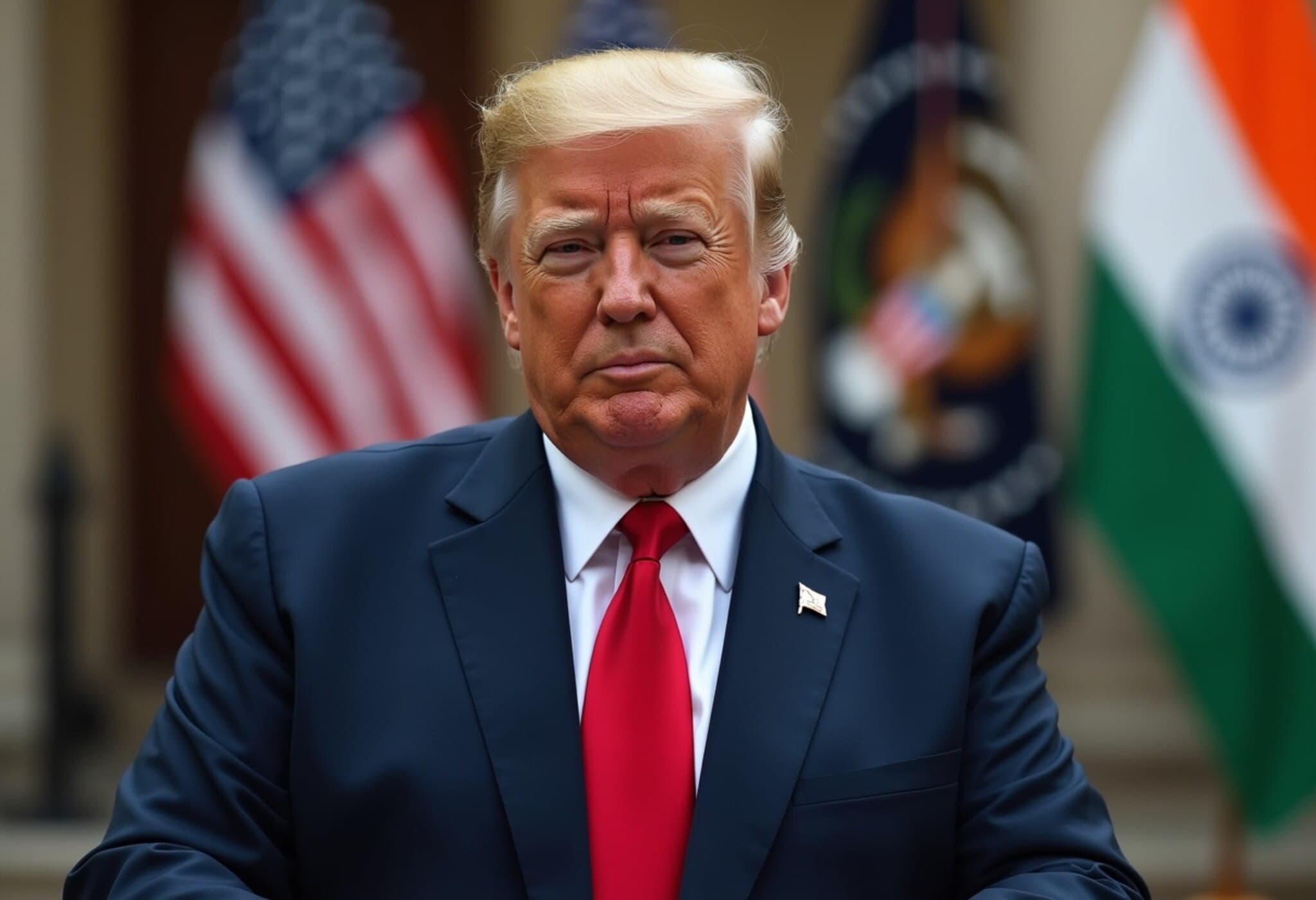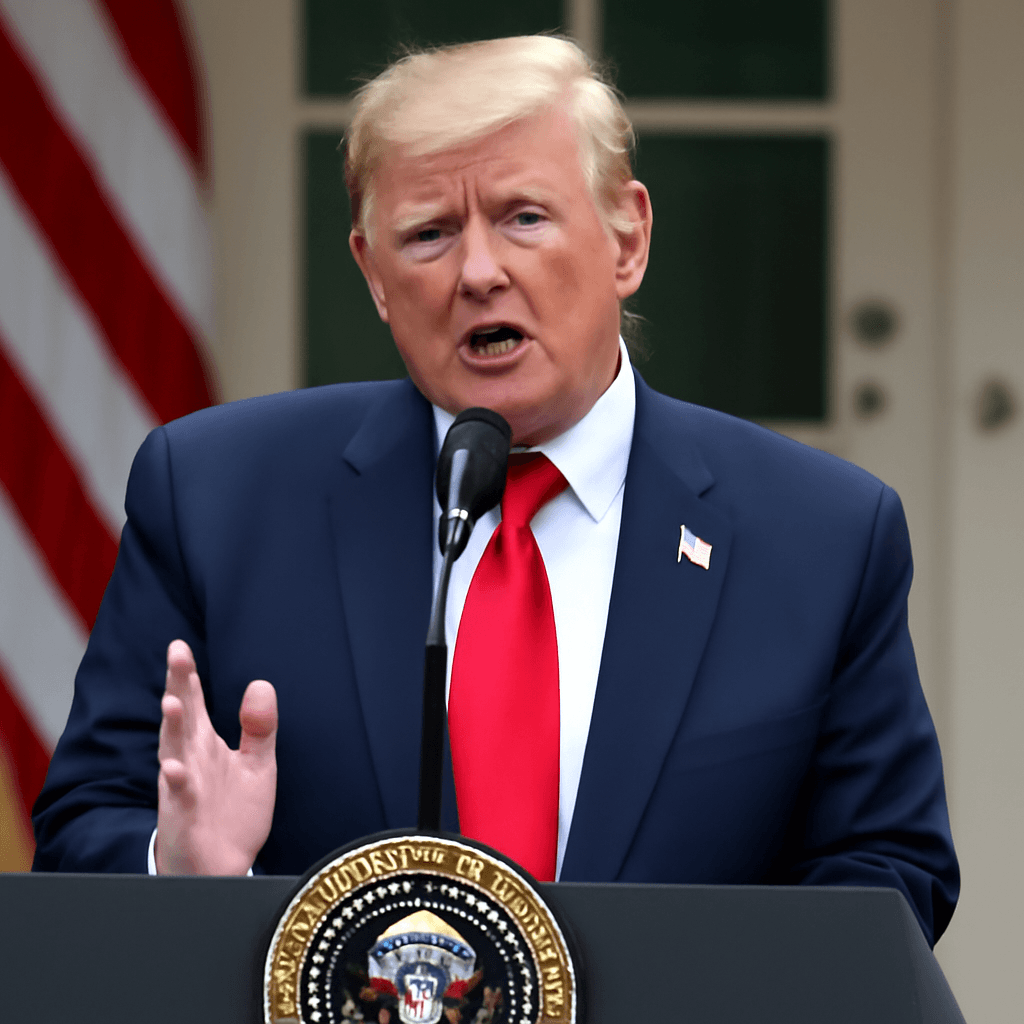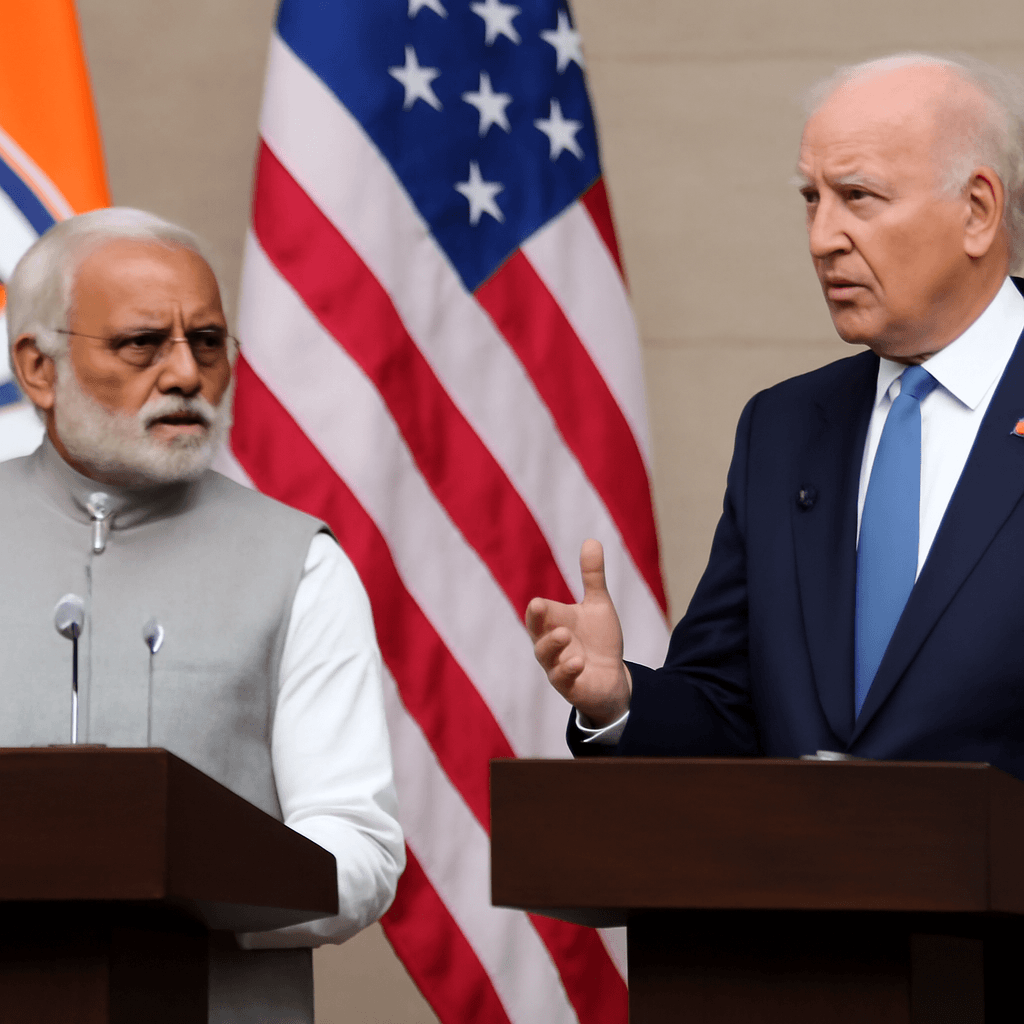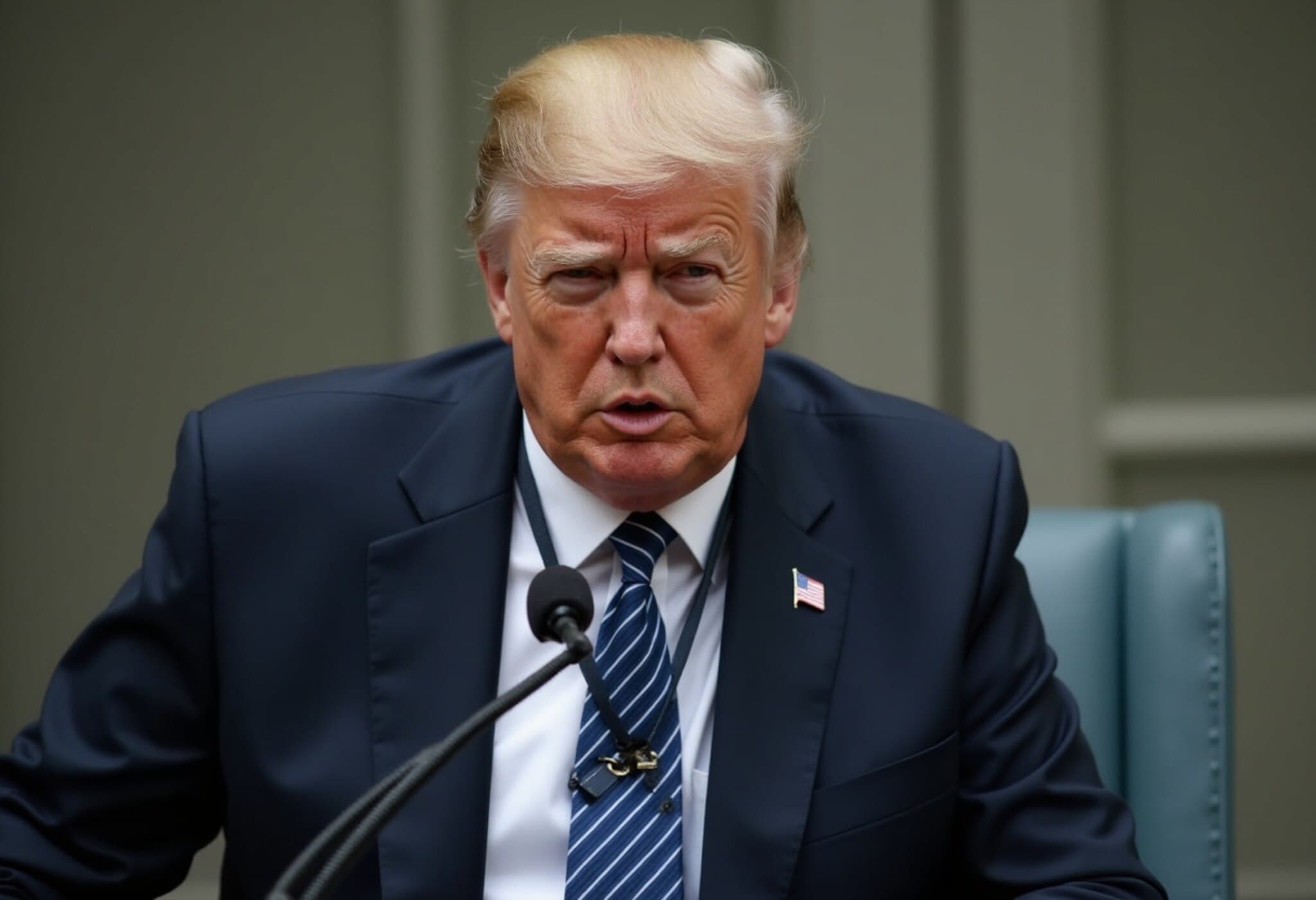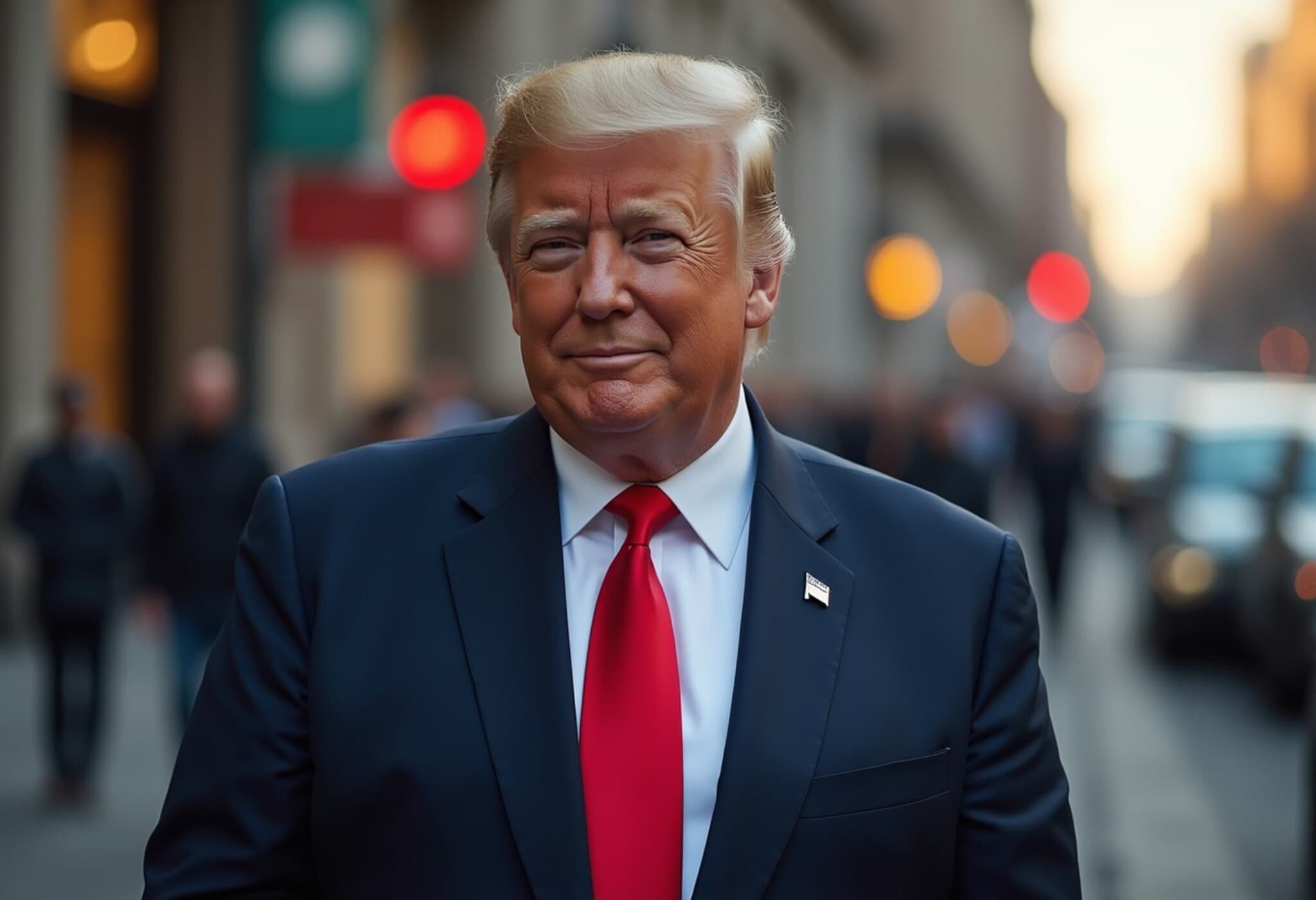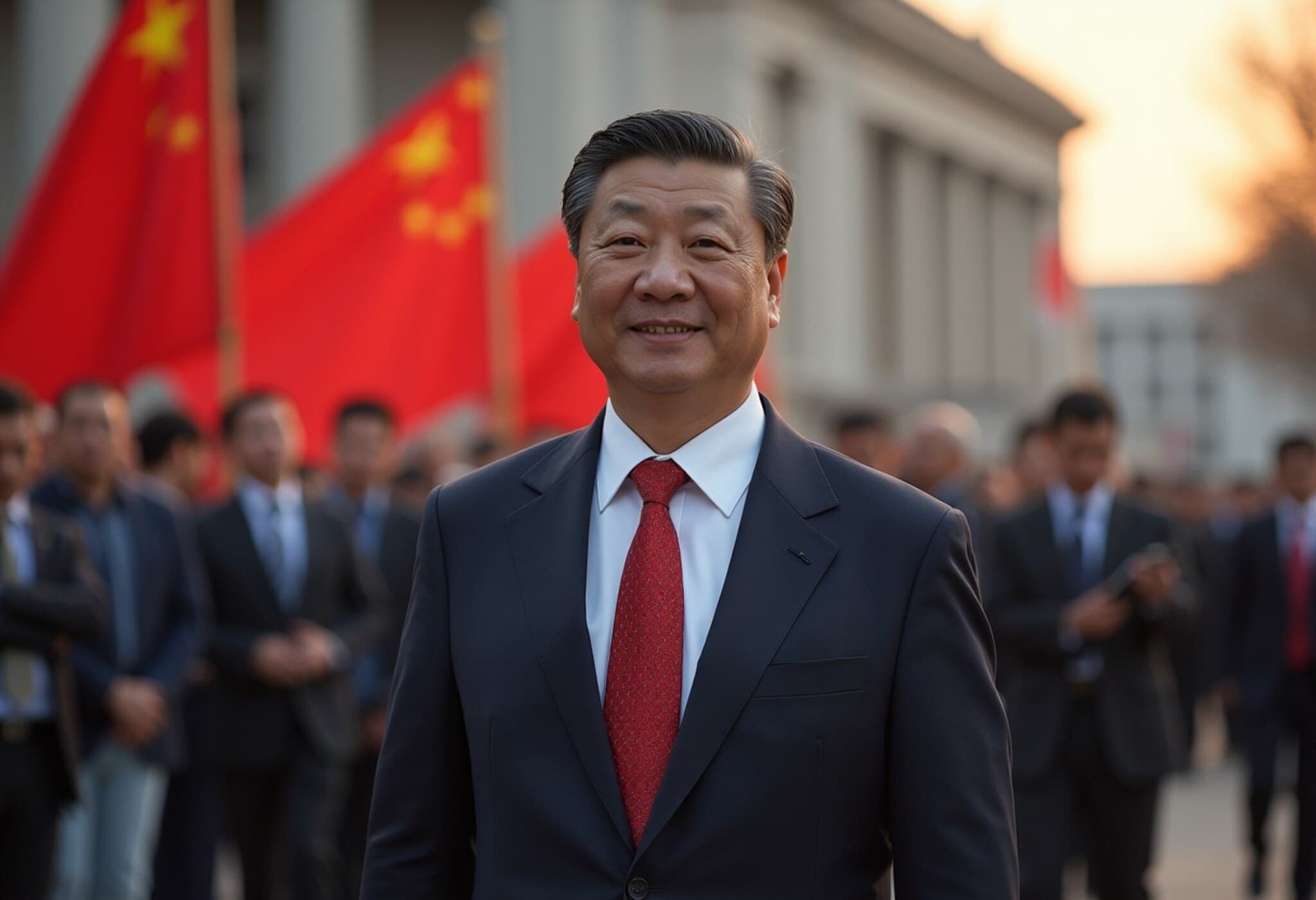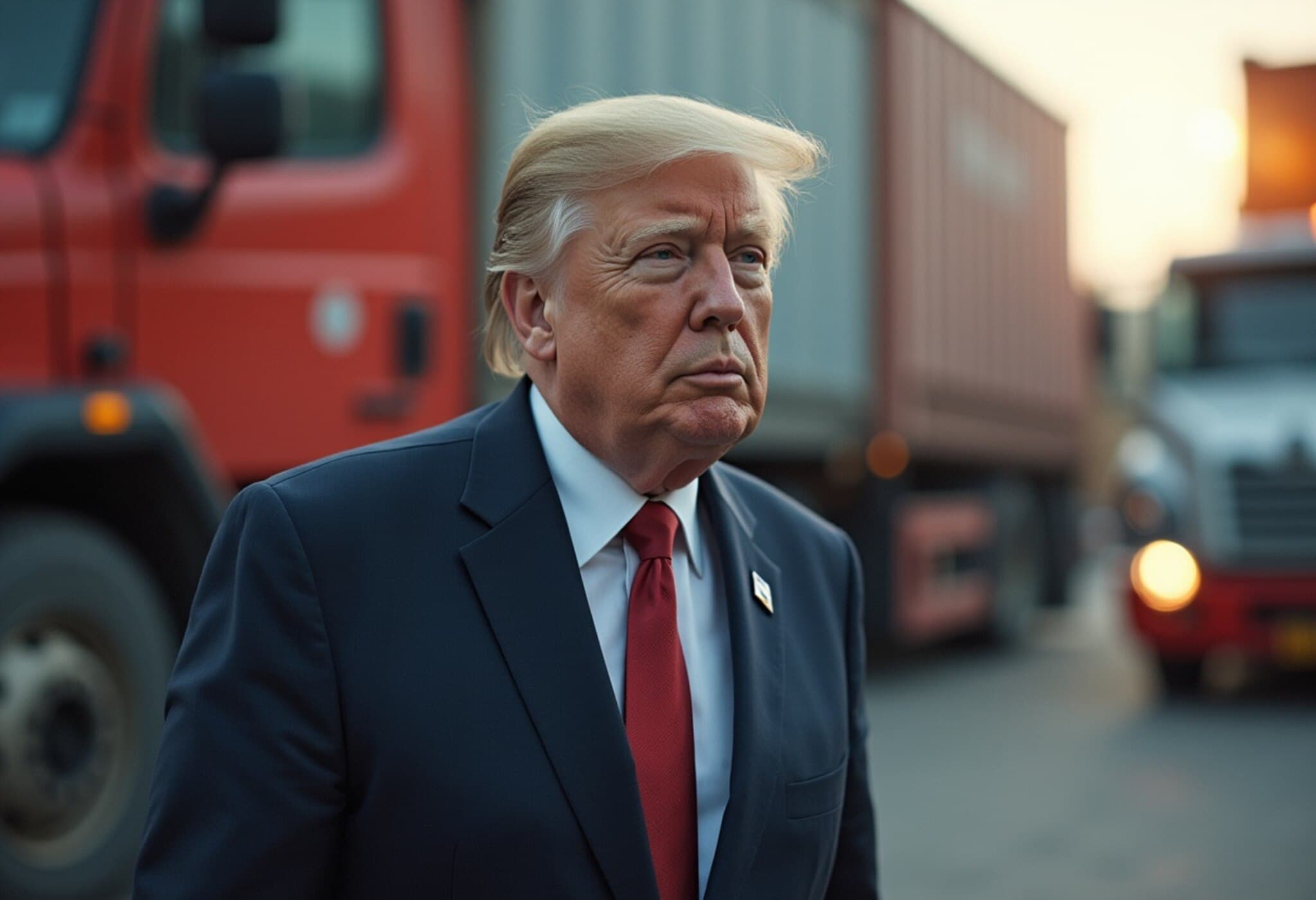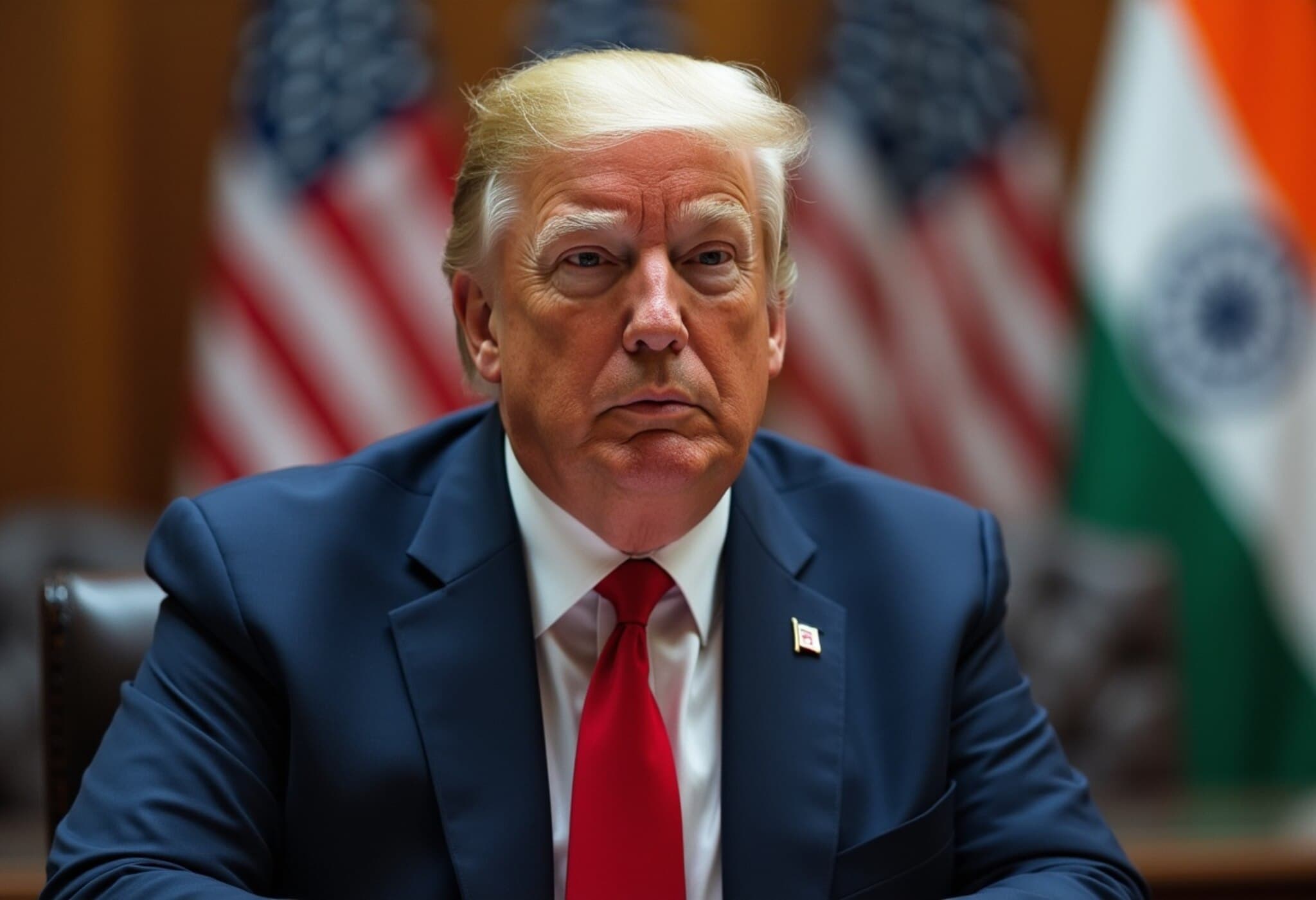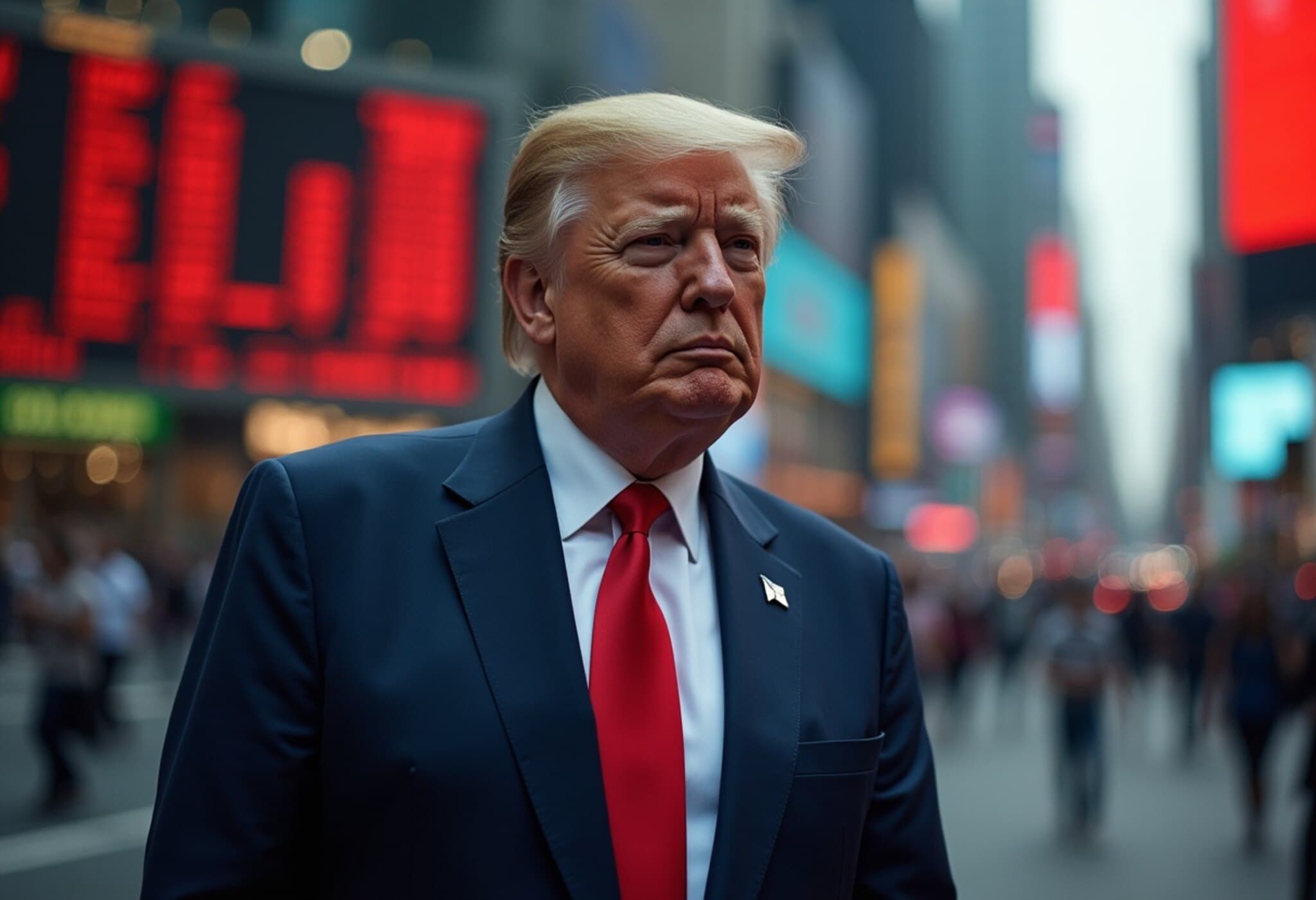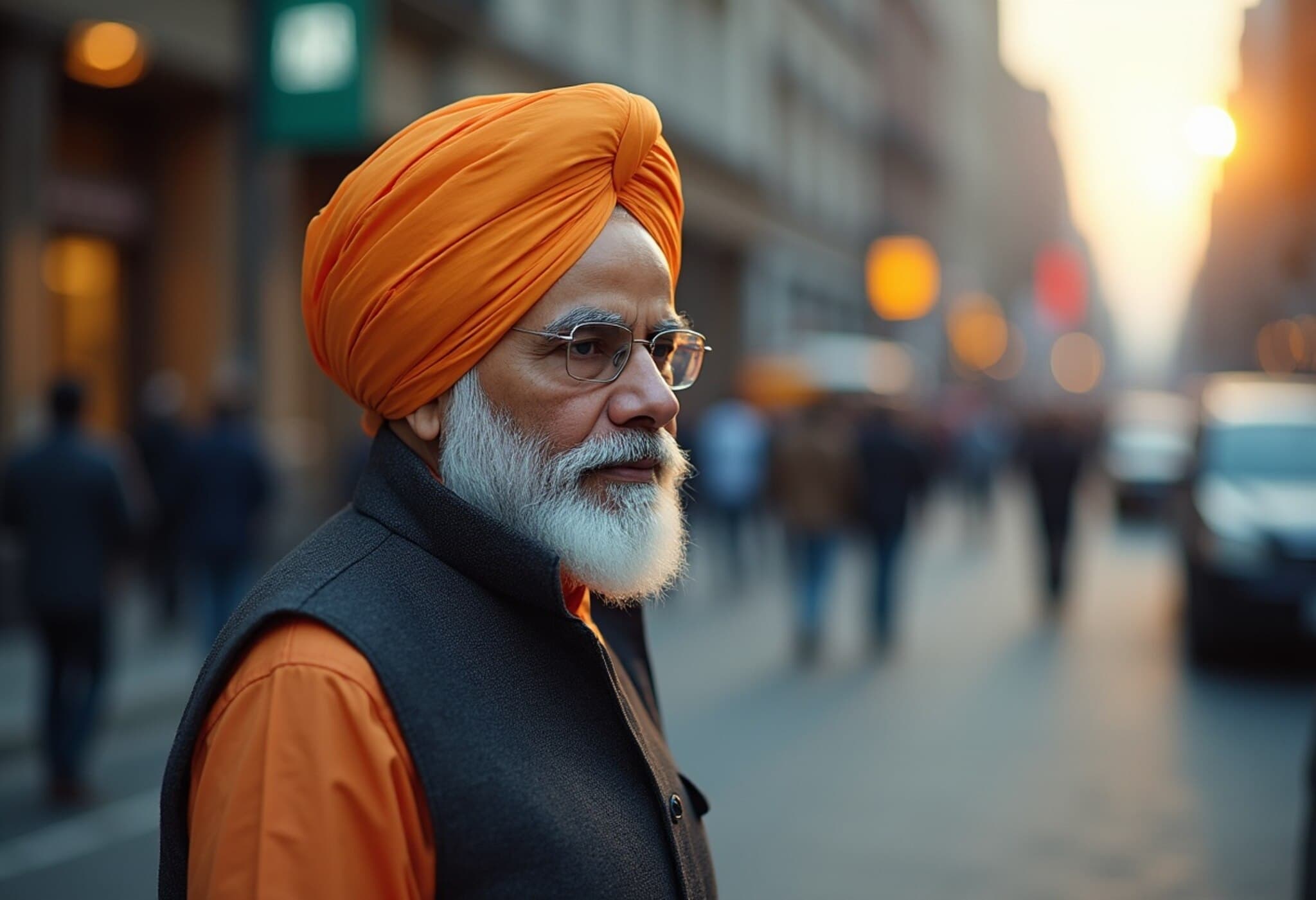Trump Imposes Additional Tariffs on India Over Russian Oil Imports
In a dramatic escalation of trade tensions, former US President Donald Trump announced an additional 25% tariff on Indian goods, stacking it onto the existing 25% tariff declared earlier this month. This move raises India's total tariff burden to a striking 50%, the highest currently applied among US trading partners penalized for importing Russian oil.
Details of the Sanctions and Trump's Warning
Speaking at the White House alongside Apple CEO Tim Cook and senior administration officials, Trump emphasized a robust future stance, remarking, "You are going to see a lot more. You are going to see so much secondary sanctions." This statement signals potential further actions extending beyond tariffs, reflecting Washington's intensified efforts to curb Russian oil purchases globally.
The newly imposed tariffs are set to take effect on August 27, marking a sharp turn in US-India trade relations that had already been displaying strain due to divergent approaches to Russia.
India’s Official Response: Condemnation and Defiance
India's Ministry of External Affairs (MEA) promptly condemned the move, issuing a pointed statement calling the tariffs "unfair, unjustified and unreasonable." The MEA stressed that India's oil imports are driven by market considerations and essential for the energy security of its vast population of 1.4 billion.
The statement also underscored that several other countries, including China, continue to import Russian oil, yet have not faced equivalent penalties, highlighting concerns about selective enforcement.
Selective Enforcement? Trump’s Reply
When questioned about inconsistencies in sanctioning, especially why China and Turkey faced lower tariffs (30% and 15%, respectively), Trump hinted that additional sanctions could follow, saying, "We did it with India. We are doing it probably with a couple of others. One of them could be China." This insinuates a broader US strategy targeting secondary buyers of Russian oil.
Contextualizing the Tariffs Within Global Trade
India's 50% tariff aligns it alongside Brazil, while other US partners such as Myanmar, Bangladesh, and Vietnam face significantly lower tariffs. This disparity raises questions about the consistency and strategic focus of US sanctions.
Experts observing the situation note that the US moves could have far-reaching geopolitical ramifications. India's energy security depends heavily on diversified oil sources, and abrupt tariff impositions risk disrupting trade and diplomatic relations, especially at a critical moment when energy markets and supply chains remain fragile.
Expert Insight: Balancing Energy Needs and Diplomatic Pressures
Energy policy analyst Dr. Anita Sharma explains, "India's energy security is a complex puzzle, involving market dynamics, domestic demand, and geopolitical alliances. The US sanctions impose economic pressures, but they also complicate India's diplomatic tightrope walk between maintaining relations with both Russia and the US."
What Lies Ahead?
Asked if the tariffs might be eased should a peace deal emerge between Russia and Ukraine, Trump was noncommittal: "We will determine that later, but right now, they are paying a 50 per cent tariff." This uncertainty leaves open questions about the future of US-India trade ties and the broader global efforts to isolate Russia economically.
Implications for US-India Relations
- Trade disruption risk: Doubling tariffs to 50% can dampen bilateral trade, hurt Indian exporters, and strain diplomatic goodwill.
- Energy security challenges: India's dependence on affordable oil imports to power its economy creates pressure to diversify sources while navigating sanctions.
- Geopolitical balancing: India's stance illustrates the challenges countries face amid competing US and Russian influences.
- Potential expansion of sanctions: US hints at targeting other countries increase uncertainty in global oil markets and supply chains.
Editor’s Note
This development underscores the intricate web of energy security, international diplomacy, and economic sanctions shaping global affairs. India's firm response highlights a growing impatience among nations navigating their own national interests amid great power conflicts. Meanwhile, the US’s aggressive sanctions approach raises critical questions about consistency, fairness, and effectiveness.
As the world watches, key questions remain: Will these tariffs prompt India to realign its energy partnerships? How will US administration balance sanction enforcement without alienating key allies? And what impact will this have on the broader geopolitical landscape as tensions flare across continents?
Understanding these dynamics is vital not only for policymakers and investors but also for citizens globally who witness the ripple effects of these complex international interactions on daily life.
Written by [Author's Name], with contributions from experienced policy analysts and regional experts.

